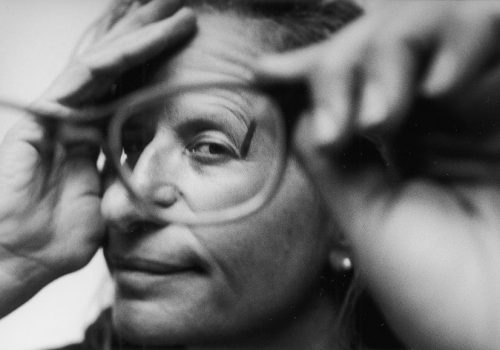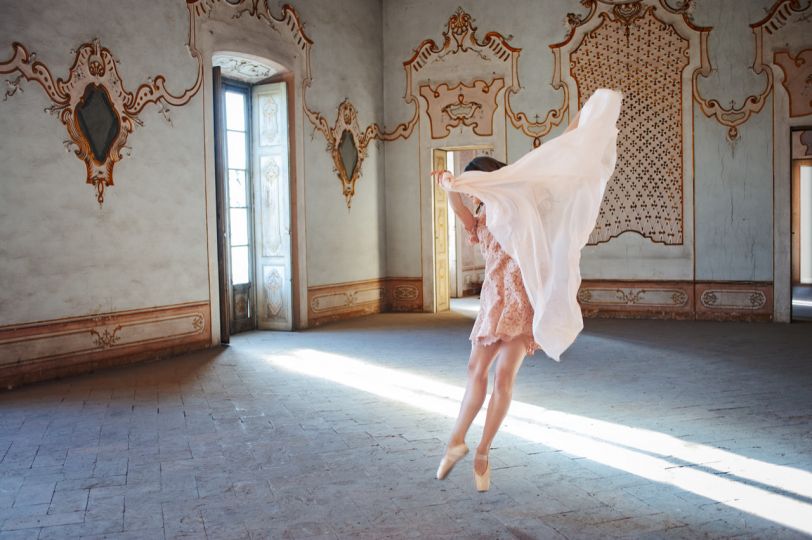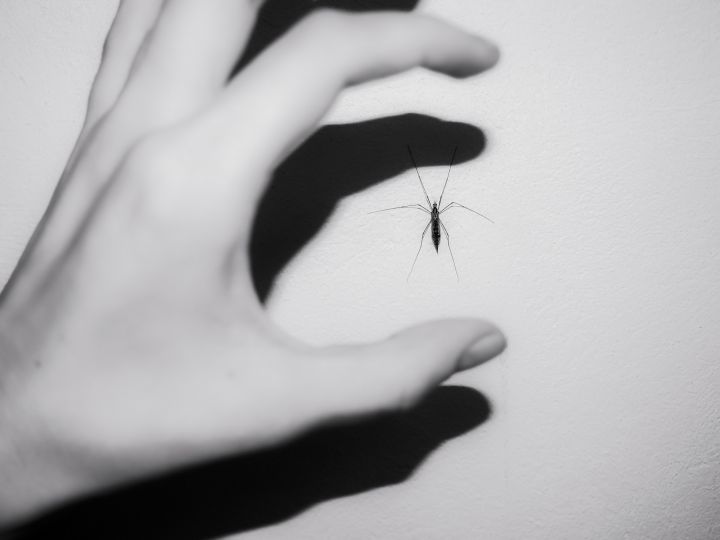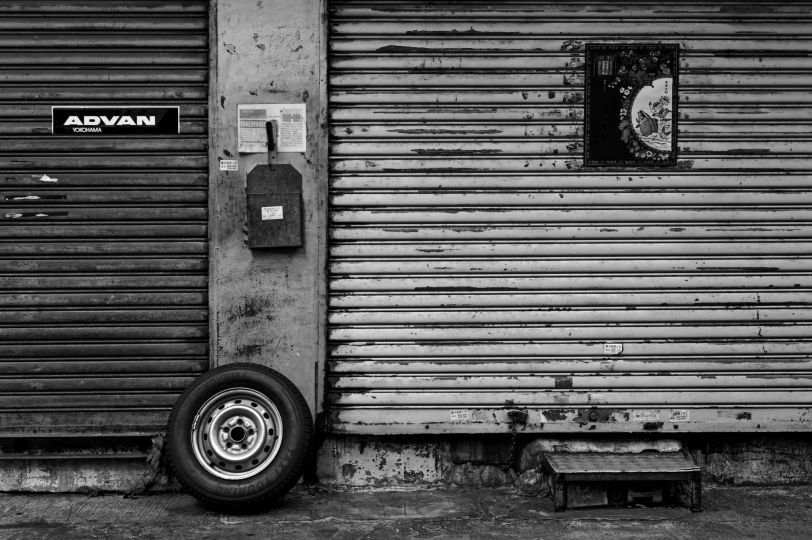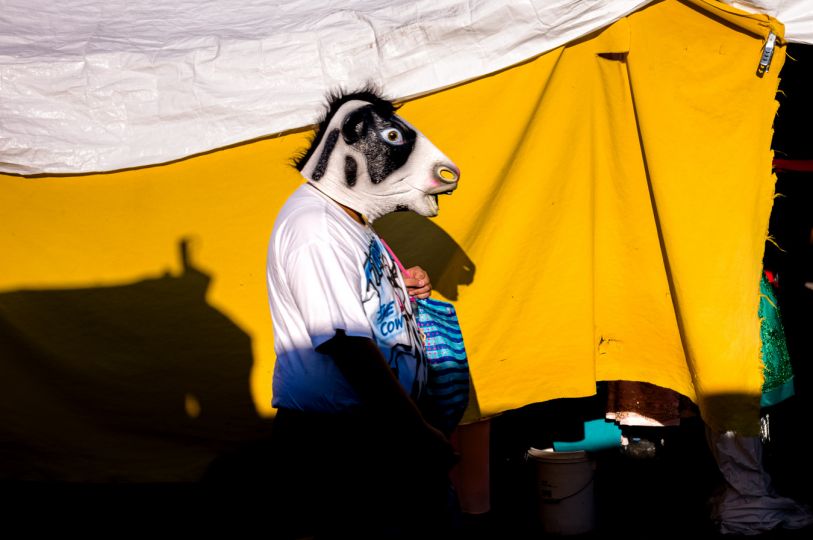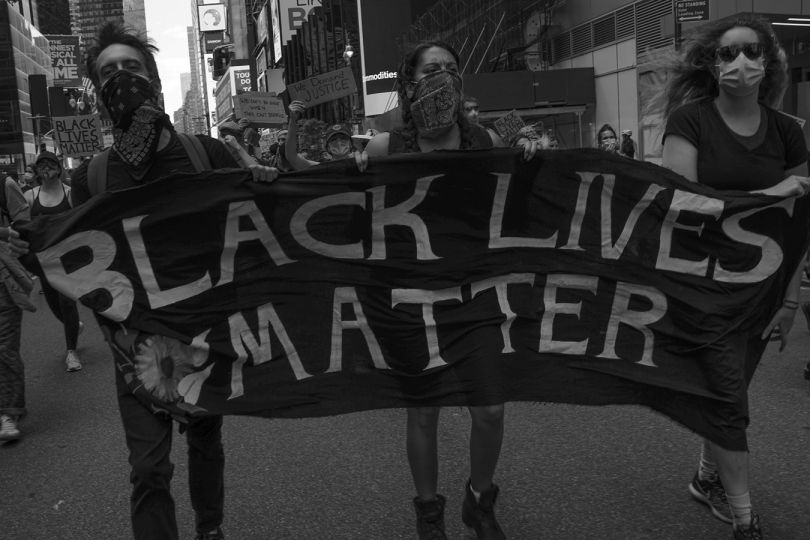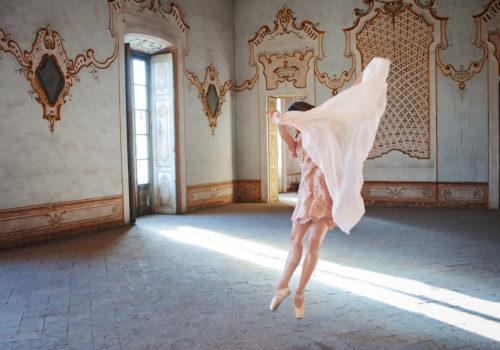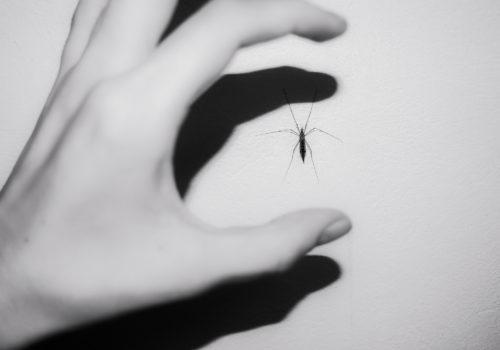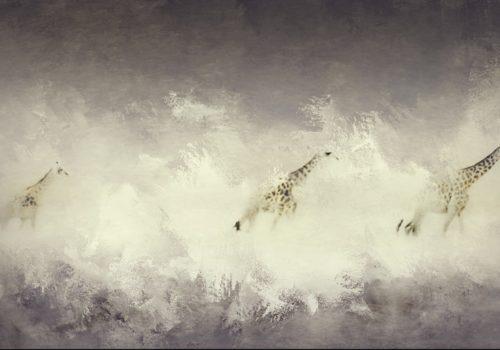Thames and Hudson publishes a new book by American photographer Duane Michals which gathers his best portraits. Duane Michals explains below his ideas about portraits, with a certain humor, as usual.
There are four sorts of photographic portraits:
1 – Stand and Stare
When daguerreotypes were first made, clamps held the subject’s head firmly in place while being photographed so it couldn’t move and cause a blur, which was considered a flaw. In time, as the speed of film increased, this procedure became unnecessary, but the stand and stare position became the de rigueur posture for photographic portraits. My childhood was spent having my picture taken in the backyard with visiting relatives from Chicago as my mother peered through a Brownie camera, directing everybody to smile as she composed her shot. Photographs of our smiling relatives squinting in the afternoon sun became the evidence of their visit to McKeesport. Nothing more was expected of these amateur portraits but to find a place in our family album. There was an awkward innocence and naive elegance in their simplicity. Snapshots were just snapshots.
Today the stand-and-stare tradition has assumed artistic pretensions. Starting with Nadar, and continuing through August Sander and Diane Arbus, stand and stare has outstripped all legitimate heirs and attained stardom. Its most famous current practitioner is Rineke Dijkstra, whose celebrated portraits are of teenagers on a beach, Israeli soldiers, and children in a park, all staring blankly like objects in a still life painting. We bring to these photographs what we want to believe, without any validation from the subjects themselves. We might have questions, like, “What do Israeli soldiers think about Palestinians?” or “What do they think about the privileges of the religious class?” How do the anxieties of these paper cut-outs on a beach in the Netherlands compare to the anxieties of young people on a beach in New Jersey? We’ll never know anything important beyond mere description. Where is the insight? Insight is the artist’s signature.
Dijkstra garnishes the traditional portrait with conceptual categories, but it’s the same solution. Only the faces have been changed to protect the innocent. In spite of her artistic ambitions, Dijkstra the observer is left bereft.
When we look at a portrait, what do we really see? A posture, an attitude. Who is really there?
I knew my mother and father for much of my life, and not once did they reveal themselves to me. A picture of them standing next to each other, embracing, doesn’t tell you they haven’t kissed in forty years and he drank too much. How could I possibly reveal their secrets in a snapshot? Let us renegotiate the tired photographic rules with text or perhaps stories or notations. One must look behind the photographic curtain to discover a new kind of solution. It might take a new definition of portraiture. Although stand and stare is a historically legitimate way of making portraits, why not expand one’s insight into the sitter’s personality, beyond appearances?
How do we stop looking at people when we should be looking into them? Emotional content animates the still portrait; without emotion, the portrait remains moribund. Portraiture has become middle-aged and fat, comfortably complacent on museum walls.
2 – Prose portrait
A prose portrait tells the story of a person. The sitter becomes the hero of his or her own tale, and something about their nature is revealed in the plot. I photographed Michael Richards, whose funny personality on the television series Seinfeld was Cosmo Kramer, the comic goofus. I was delighted to learn that Richards and I both admire Jacques Tati’s comic shtick as M. Hulot. I contrived with Richards to photograph him as a character in a Hulot moment.
3 – Annotated portrait
I write my thoughts and observations about the sitter; I editorialize.
4 – Imaginary portrait
My idea of what somebody might be, inventing them as a product of my imagination.
Duane Michals
Duane Michals (Born 1932) American photographer noted for his sequential images, which often deal with myths and mysteries and for his creative extension of the possibilities of the photographic medium. This text is excerpted from Duane Michals: Portraits, by Duane Michals. Reproduced by permission of Thames & Hudson Inc.
Duane Michals: Portraits
Published by Thames & Hudson
176 pages, 178 photographs
$45
http://www.thamesandhudsonusa.com/books/duane-michals-portraits-hardcover

